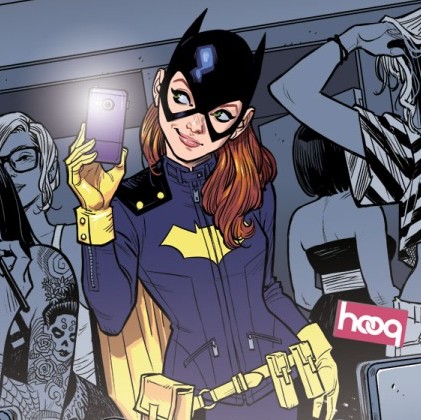One was the sale of Hergé’s original cover to Tintin in America in a recent auction for 650,000 EU ( technically, I should write the amount as 650.000 EU. Europeans apparently use decimal points where we use commas, and vice versa). Along with the auction premium price, the total came to 780 000 EU. At the prevailing dollar-EU exchange rate, this makes it the first piece of comic art to cross the one million dollar mark.
There was a lot of discussion among the American collectors about whether any US comic art would ever make it to that level. Quite a few of them were of the opinion that if the cover to Action Comics #1 ( the issue that marked the debut of Superman, way back in 1937), or Amazing Fantasy# 15 ( the first appearance of Spider-man ) ever came into the open market, they could easily bring a million dollars, both being cornerstones of American historical memorabilia and twentieth century popular culture. Until the Tintin cover sold, the most expensive comic art pieces were John Romita Sr Spider-man covers, one of which made 100,000$ a few years ago, and Peanuts Sunday pages which are currently at an alarming high because Charles Schultz’s estate is buying off almost every Schultz page that comes into the market. Of course, the comic art community is notorious for its secretive under-the-radar deals, so one can only hypothesise based on public information available through auction data.
My take on this, which I posted to a message board I frequent:
It’s not hard to imagine why (this Tintin cover) would command so high a price. Just as an example:
1) If John Romita Sr drew only 23 Spider-man comics in his lifetime, including covers and interiors,
2) if ALL of the art were locked up by the artist’s estate.
3) these were the only Spider-man comics to be published by Marvel
4) Romita Sr’s Spider-man was the kind of comicbook that parents would recommend to their kids and grandchildren for decades, thereby making those 23 comics a part of generations of readers and fans, spanning all ages.
With all these in mind, isn’t it natural that prices would skyrocket beyond belief if a single cover came out into the market?
There are only this number( 23) of Tintin covers, after all, and add to it the fact that they are Essential Comics, known and loved for 70+ years, and with translations in over fifty languages, one can hardly be bemused at the kind of hysteria an original Tintin cover would elicit from collectors.
You cannot extend this logic to other highly influential American creators – Kirby, Charles Schultz ( whose work I think is slowly approaching that level, because of the scarcity in the market introduced by the mass-buyout), and even Frank Frazetta because their volume of work is huge compared to Herge’s. It cannot even be extended to historic items like the cover of Superman #1, well, yes, that’s a historic cover, but there are other options for the discerning Superman collector – a landmark Curt Swan cover, or a Murphy Anderson splash, or even a Byrne cover. In case of Tintin, these 23 covers are ALL that there is, this might very well be the only chance a collector has, in his lifetime, to pick up an original Tintin cover, drawn by the only artist associated with the character. I know I would go all the way if I had the money. :-)
And the baseline is – the words ‘Tintin’ and ‘Herge’ elicit much more response in the non-comic-book reading masses ( outside the US, that is) than ‘Romita’ or ‘Schultz’ would – even though Spider-man and Peanuts are equally well-known and loved characters as the boy reporter.
Yesterday, there was the news that an anonymous collector had donated all 24 pages of Amazing Fantasy 15 to the Library of Congress, putting paid to all rumours of whether the art would ever surface and how much its value would be. The collector apparently refused to submit the pages for an official valuation( he doesn’t even get a tax benefit this way, and probably he does not even need it! ), and before the donation, even contacted the artist Steve Ditko to find out if he wanted them back. Ditko, a reclusive creator who refuses to be photographed, interviewed or bothered in any way whatsoever by fans, has a history of subjecting his own artwork to mutilation and it’s probably to everybody’s benefit that he did not claim any rights to the pages. It’s official – the first appearance of Spider-man now belongs to the American people. Half the collectors are now swooning over the fact that they can actually SEE the pages for themselves, the rest just crossed off the item from their wish-list.
This is particularly significant because nobody really knows where most of the art from that period is, and how much of it actually exists. Comic art was seen as disposable items once the print negatives were created, and were thrown in the trash, shredded or given away. It wasn’t until the seventies that artists like Neal Adams started the trend of the publisher having to return the art to the original artists. And once the comic art collectors’ market took off in earnest, there was a lot of art stolen from Marvel’s warehouses. To this day, the majority of Jack Kirby’s pages remain locked up in private collections, the owners fearing lawsuits and finger-pointing if they display the art to the world.

